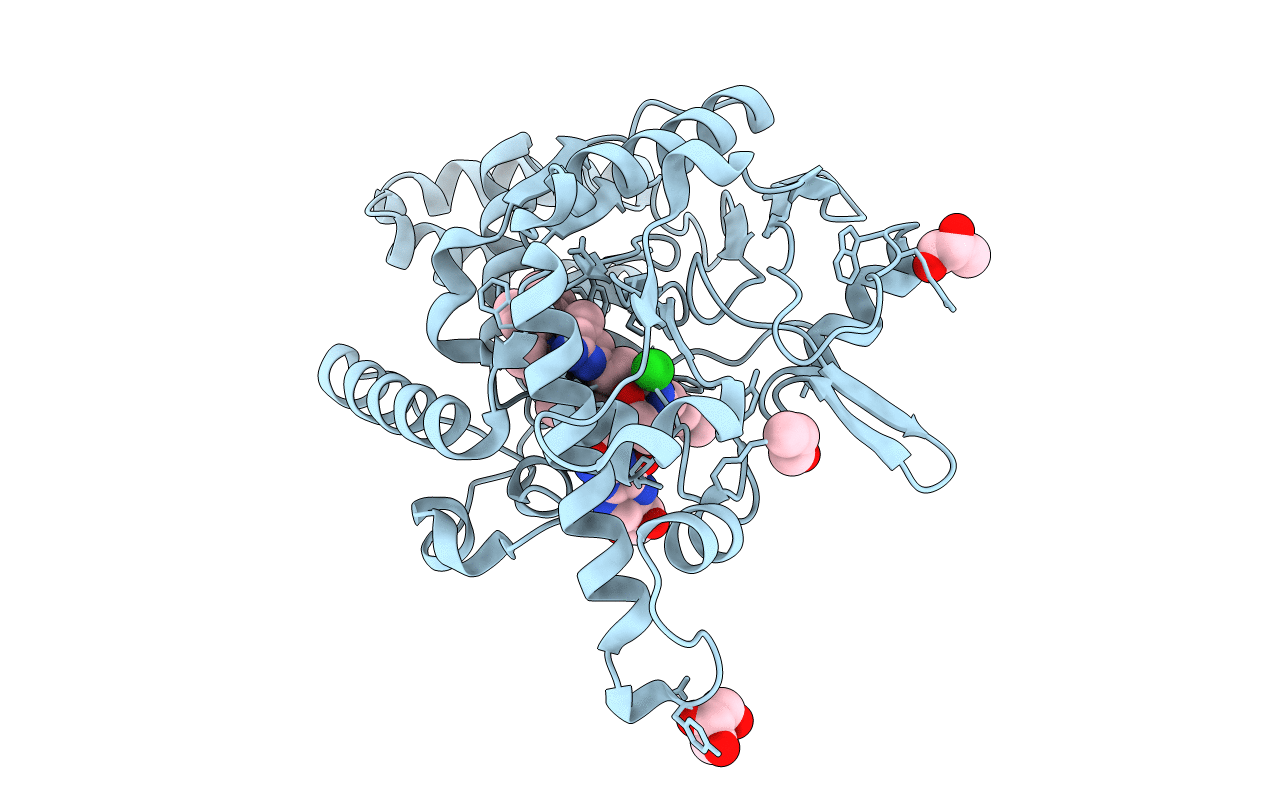
Deposition Date
2015-03-22
Release Date
2015-06-24
Last Version Date
2024-05-08
Entry Detail
PDB ID:
4UG6
Keywords:
Title:
Structure of Bacillus subtilis Nitric Oxide Synthase in complex with 6,6'-(pyridine-3,5-diyldiethane-2,1-diyl)bis(4-methylpyridin-2-amine)
Biological Source:
Source Organism:
BACILLUS SUBTILIS (Taxon ID: 224308)
Host Organism:
Method Details:
Experimental Method:
Resolution:
1.81 Å
R-Value Free:
0.23
R-Value Work:
0.19
R-Value Observed:
0.19
Space Group:
P 21 21 2


